Office of Research & Development |
 |

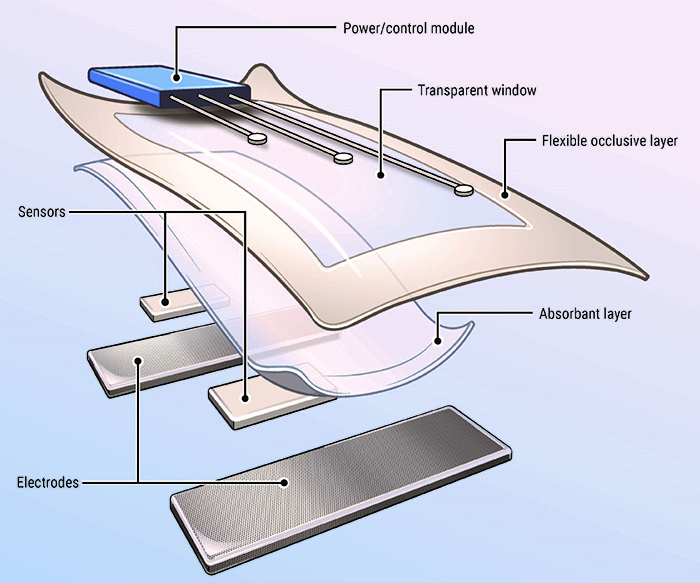
Exciflex was created from smart bandage technology developed by Dr. Kath Bogie and colleagues at the VA Advanced Platform Technology Center and Case Western Reserve University in Cleveland. (Illustration by Grace Gongaware)
September 9, 2020
By Erica Sprey
VA Research Communications
"Veterans are one of the groups at highest risk for chronic wounds, especially those who have sustained a spinal cord injury."
Veterans and others with limited mobility who use a wheelchair are prone to developing pressure injuries. Also referred to as pressure ulcers, pressure injuries are chronic wounds that can be painful for patients and expensive to manage, both for the individual and the health care system. Chronic wounds that are slow to heal require repeated trips to the clinic for specialized wound care. Because many Veterans live long distances from the nearest VA medical center, treatment for them can require hospitalization over a period of months. The cost to treat pressure injuries in the U.S. is $9.1–$11.6 billion per year, according to the Agency for Healthcare Research and Quality.
It is a problem that Dr. Kath Bogie has been working on intermittently for nearly 15 years. Bogie and a team of colleagues have now created a "smart bandage" that makes use of electrical stimulation to treat chronic wounds that will not heal on their own. The high-tech bandage is based on technology developed by the researchers—initially named the Modular Adaptive Electrotherapy Delivery System or MAEDS.
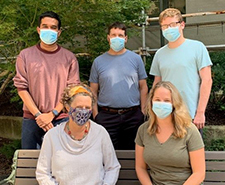
Dr. Kath Bogie's research lab at the VA Advanced Platform Technology Center in Cleveland. Pictured from left to right, standing: Dhruv Seshadri, Bryan Hausman, Jason Collins. Seated: Kath Bogie and Katie Schwartz.
Bogie is a biomedical engineer who specializes in chronic wound care. She works with the VA Advanced Platform Technology Center (APT), in Cleveland. She says that Veterans are one of the groups at highest risk for chronic wounds, especially those who have sustained a spinal cord injury. Service members are also more likely to experience a traumatic wound like a blast injury, which is more complex than an acute surgical wound and has a greater risk of infection.
"As a normal wound heals, there is a lot of biological activity," explains Bogie. "The cells start to proliferate, and the wound begins to heal and close up. A chronic wound gets stuck and doesn't go on to heal. The general thinking is that electrical stimulation provides the energy to promote healing in a chronic wound."
Chronic wounds are also colonized with bacteria that may form a biofilm, which delays healing. Preliminary data suggest that using electrical stimulation can disrupt the biofilm, minimize infection, and promote the growth of new blood vessels, says Bogie.
Using electrical stimulation is not a new approach. However, the science has not been applied consistently, says Bogie. She points to multiple clinical studies that used various off-the-shelf devices to deliver electrical stimulation, like transcutaneous electrical nerve stimulation (TNS), which is typically used to treat back pain. All of these studies used a standard surface electrode that must be reapplied to the skin every time the patient needs to receive therapy. The smart bandage technology is unique in that therapy can be delivered around the clock and is not limited to clinic visits, which promotes healing.
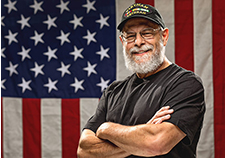
Veteran disability payments led to fewer hospitalizations

Study links statin use with diabetes progression, points to need for further research
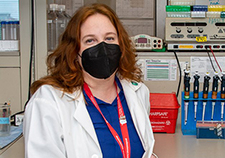
For VA’s Brandy Wade, making science straightforward is a mission and passion
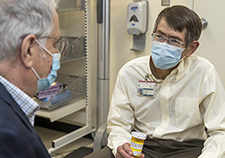
Can statins help 75-and-overs stay healthy? PREVENTABLE trial will provide answers
For a wound to heal effectively, it must have the right conditions. "A wound feels better when it is kept moist and warm, but not too hot, not too dry. It's like Goldilocks," says Bogie. The smart bandage can stay in place for up to seven days, so the wound environment remains stable. That is one of the reasons why the smart bandage system is superior to a traditional wound dressing that must be removed every time the patient receives conventional electrical stimulation.
The impetus for developing the smart bandage grew out of Bogie's discussions with wound care clinicians. In preclinical work with animal models, there was also a need for the animals to be able to move freely while constantly receiving therapy. She says this led to a need to "fit everything onto the bandage itself," i.e., the layered bandage; the mechanism to deliver electrical stimulation; temperature sensors; and the control module, or smart chip.
Not only does this multi-layer construction benefit the patient—fewer painful dressing changes, and consistent therapy—but it is cost-effective as well. The top half of the smart bandage that contains the electronics and battery can be separated from the underlying absorbent bandage, which can be used for up to seven days before being discarded. The clinician can then affix a new bandage to the existing electronics to continue therapy for another seven days, or as long as the patient requires.
The smart bandage also has the ability to record what's happening internally, both within the bandage and the wound. The chip records data like the battery charge and period of use. It can also record temperature readings and impedance across the wound. Both of these measures can tell the clinician how well the wound is healing.
"Measuring the temperature of the wound allows us to tell if the wound is infected or potentially ischemic (restricted blood flow). If a wound is cooler than the surrounding area, it is not going to heal," notes Bogie. "If it is warmer than the surrounding tissue, that means the wound is infected."
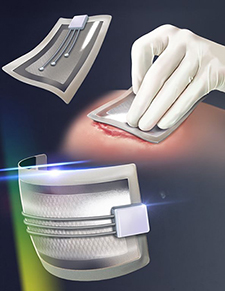
Smart bandage technology allows patients to receive around-the-clock electrical stimulation to treat chronic pressure injuries. (Illustration by Grace Gongaware)
The smart chip within the bandage has the capability to be synced up remotely using the patient's phone to send information to the clinician, allowing her to adjust therapy or advise the patient to come into the clinic for evaluation. However, that capability has not yet been approved for use by VA, according to Bogie.
A significant challenge for VA and other research institutions is bridging the gap between scientific discoveries and clinical implementation. It can take up to 17 years to incorporate research findings into routine care for patients.
There are numerous ways that VA is seeking to close that gap. In the case of the smart bandage, Bogie received assistance from Ryan Davis with the VA Technology Transfer Program (TTP), which seeks to license and patent promising new technologies developed by VA investigators.
Davis submitted Bogie's technology for inclusion in VA's first FedTech Startup Studio. The smart bandage was one of 18 inventions submitted by various federal agencies including the National Institute of Standards and Technology and Oak Ridge National Laboratory.
FedTech is a private company that connects cutting-edge technologies developed by federal labs with entrepreneurs, giving the inventors access to funding, resources, and business expertise necessary to bring their products to market. During the Spring Startup Studio that took place April 18-June 11, 18 teams were paired with entrepreneurs who walked them through a market analysis, business plan, and investor pitch to venture capital and angel investors. The inventors also participated in virtual workshops, to teach them about business principles.
Bogie was paired with three entrepreneurs: Ibrahim Mohedas, medical device development, Ashu Vats, business development, and Sava Marinkovich, marketing and sales. They renamed the smart bandage "Exciflex," to better appeal to consumers. The group conducted extensive market research and spoke to multiple clinicians about usability and design. At the end of the Spring Startup Studio, Bogie's technology was voted the "Best Potential Startup Technology," beating out four other teams from VA and promising new technologies from other federal agencies, like water desalination and automatic controls for cars.
Together the entrepreneurs have formed a startup company called Exci Inc. to bring Exciflex to market, and are currently negotiating a license agreement with VA. Bogie will serve as a scientific advisor for the company.
VA Research Currents archives || Sign up for VA Research updates